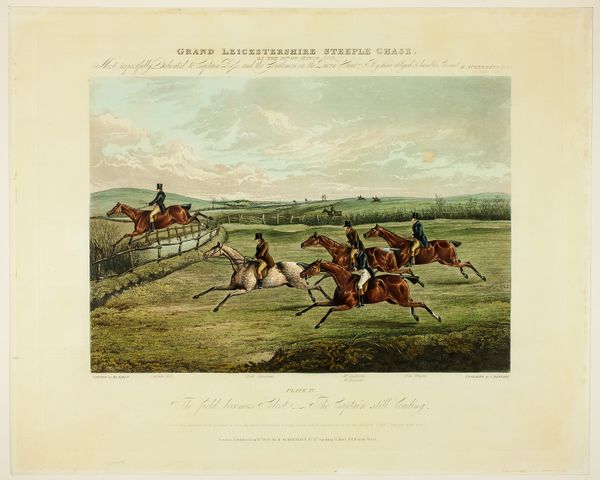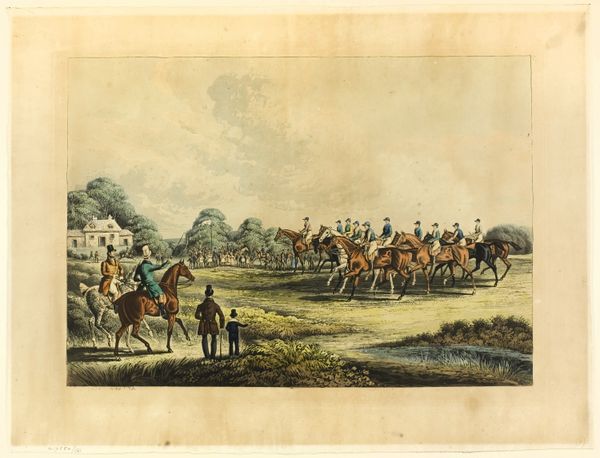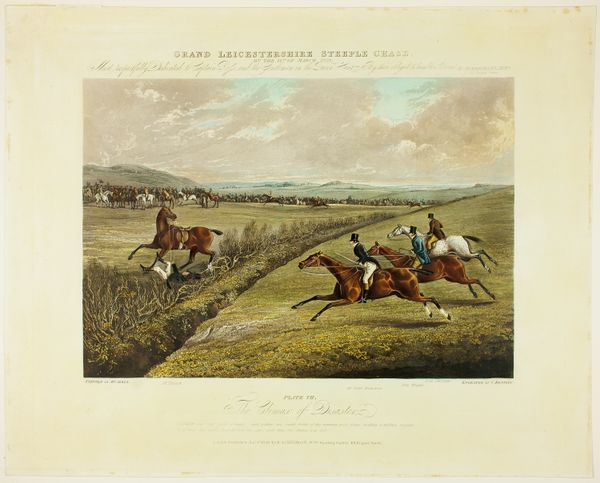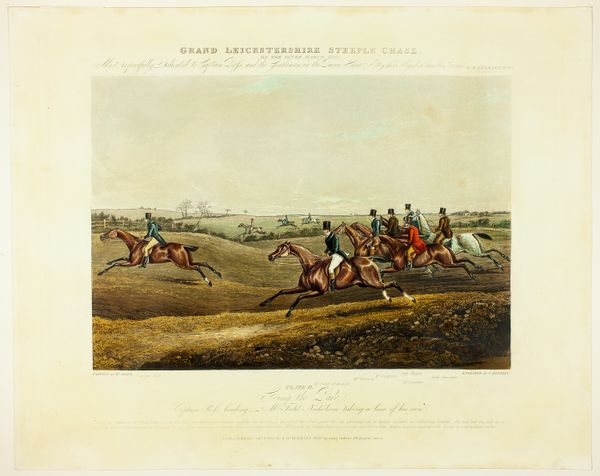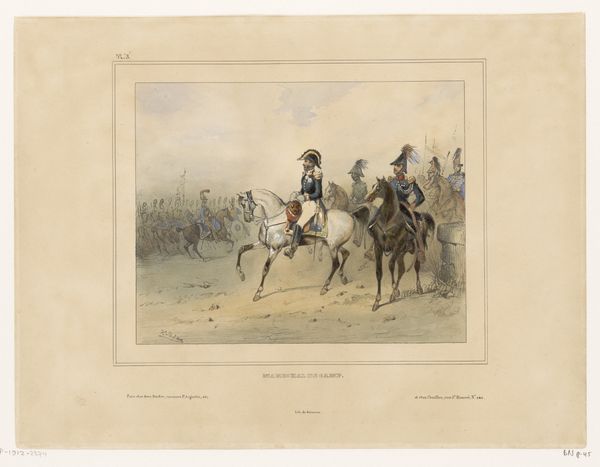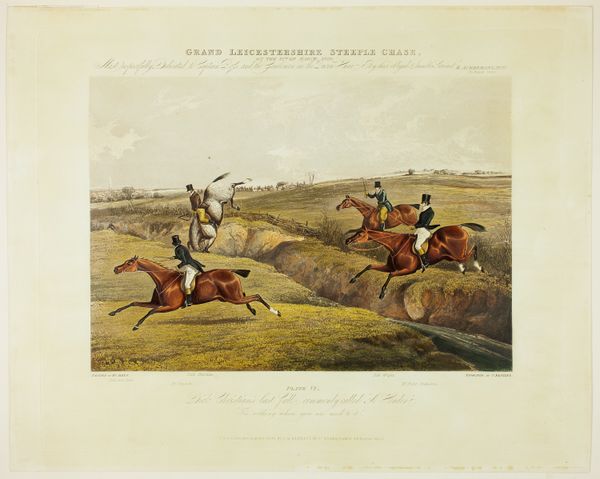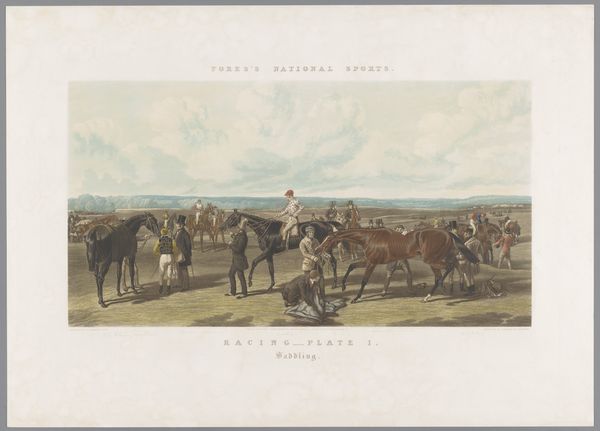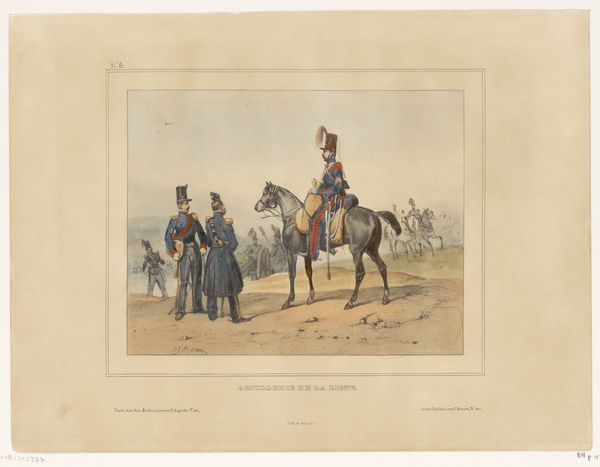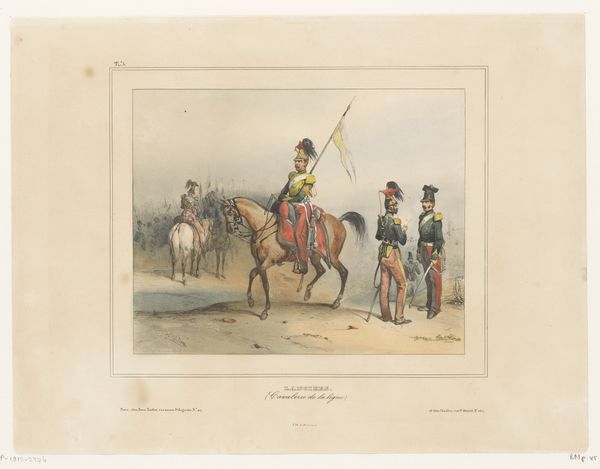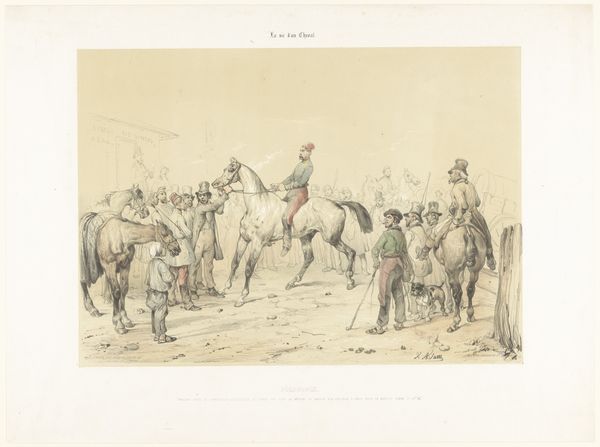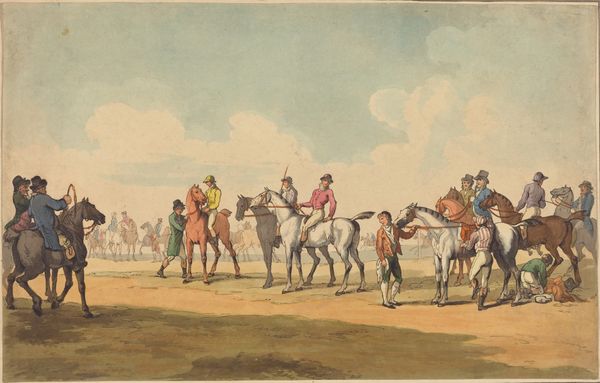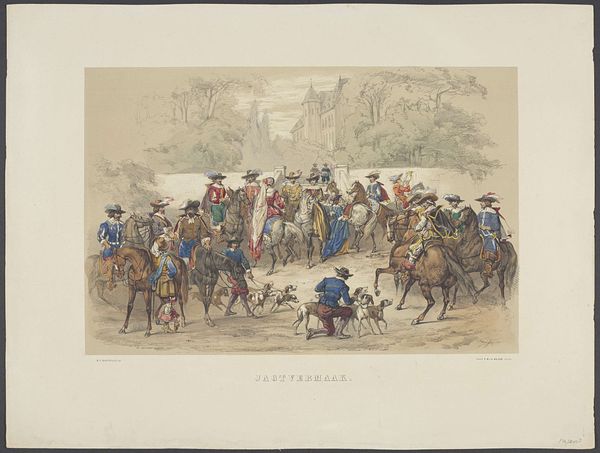
The Start, from The Grand Steeplechase over Leicestershire Possibly 1830
0:00
0:00
drawing, print, paper, watercolor
#
drawing
#
water colours
# print
#
landscape
#
paper
#
watercolor
#
romanticism
#
genre-painting
#
history-painting
#
academic-art
Dimensions: 255 × 363 mm (image); 360 × 453 mm (plate); 405 × 500 mm (sheet)
Copyright: Public Domain
Editor: Right, next up we have "The Start, from The Grand Steeplechase over Leicestershire", possibly from 1830, by Charles Bentley. It’s a print, a watercolor on paper. I'm struck by how orderly and almost performative the beginning of this steeplechase looks, very mannered, everyone in their proper outfits. What's your take on it? Curator: The very "ordinance" of it hints at the deeply embedded social hierarchies of 19th-century British society. This wasn’t simply a horse race, it was a ritualistic display of wealth and status, rigidly defined. The steeple chase itself gained popularity because it circumvented the formalized hunting traditions. The riders' attire reinforces that, wouldn’t you say? Editor: I do. But how do the institutions of art influence the meaning, or the power, of an image like this one, compared with, say, a caricature of a steeplechase? Curator: Interesting question! Consider the artistic style; it's very much aligned with academic traditions, lending legitimacy. Bentley memorializes this event, idealizes it, making it worthy of display. Whereas a caricature might critique the whole charade. Who would be consuming those images and where they were shown matters just as much as who made them. Are there other elements that speak to this hierarchical dynamic? Editor: The framing, perhaps? The positioning of the figures seems intentional, placing some in greater prominence than others, literally and figuratively elevating them. And how the scene emphasizes the role of country gentry life… I guess this image isn't just *about* a horse race. Curator: Precisely. It becomes a statement *about* societal power and the visual language that upholds it. Editor: So by examining how this work exists within social structures, it reveals more about historical values than horsemanship! Curator: Exactly. And it gives us insight into what those who commissioned and consumed the artwork wished to communicate, or to signal.
Comments
No comments
Be the first to comment and join the conversation on the ultimate creative platform.
